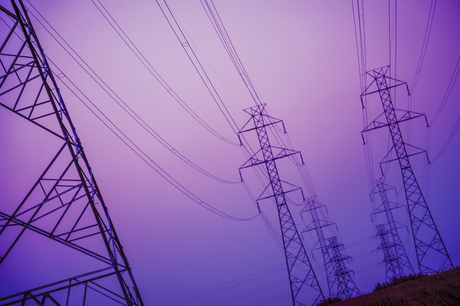Network modernisation: a requirement for utility companies
By John Coffey*, Segment Marketing Manager Utilities, Schneider Electric
Monday, 18 May, 2015

The electricity system in Australia is changing at a rapid pace. It is now facing complex external pressures from consumers cutting back on energy usage, excess capacity in the grid, a shift towards other energy options and changes to regulation.
Overall, the demand for energy has changed. ABS Energy Account data shows the average annual household expenditure on electricity grew strongly until 2009-10; however, since then it has barely increased. Consumers are responding to the increase in electricity prices and looking for more sensible ways to manage their energy consumption. In 2005, the manufacturing industry accounted for over 25% of Australia’s energy usage but in recent years the country has experienced a significant decline, especially in energy-intensive manufacturing. With the decline in manufacturing made evident by the closure of aluminium smelters at Kurri Kurri in NSW and Point Henry in Victoria there has been an unprecedented fall in both maximum demand and the consumption of energy. The closure of Point Henry reduced energy consumption in Victoria by 7%.
This decline in energy consumption has adversely affected the turnover for both retailers and generators and has led to inefficiency in distribution networks. These changes, combined with an ageing network, are having massive impacts on the energy industry. It is driving the electricity industry to adapt and look to new technology that allows utilities to measure, monitor and analyse data in an effort to be more energy and capital efficient. Modern technology affords utilities the opportunity to improve productivity and reliability, enhance operational efficiency and utilise more effective, sustainable business models.
Achieving network modernisation
To remain competitive and ensure longevity, utilities must look for ways to improve its energy efficiency. This can be achieved through network modernisation, by the availing of modern technologies and infrastructure improvements. The installation of more effective management systems and the commissioning of equipment provide greater visibility and remote monitoring, which allows utilities to readily respond to change in energy demands. This includes adopting the provision of management systems and digital metering that allow utilities to more effectively mine the data, understand and predict consumer behaviour, network impact and control energy usage.
This increased understanding and access to information will help utility companies deal with the challenges they are confronted with and implement modern technologies that will increase efficiency and minimise the total costs of network provision.
Utility and consumer benefits
The implementation of sophisticated management systems allow for remote monitoring and control, and when deployed effectively will allow numerous benefits. This includes:
- With network modernisation, utilities can reduce the losses in transmission and distribution, which will allow them to minimise the risk of unexpected transformer failure.
- The option for more real-time knowledge about the electricity grid and its performance, which allows for less energy to be used and CO2 emissions to be lowered.
- Network reliability can be improved as supplies can be restored to many customers automatically and prior to dispatching repair crews.
- There are more alternative, effective solutions for replacement of ageing assets. For example, if a utility distribution company can deploy a fully automatic self-healing system, they may be able to substantially delay the replacement of an ageing cable network. Self-healing technology will give the utility and customers the comfort that should faults occur, energy supplies can be rapidly restored to affected customers. Extending the asset life cycle therefore will not unduly affect customer service or compromise reliability metrics.
- Energy generated from renewable sources is by its very nature intermittent and fluctuating, but it is attractive because of the societal and environmental benefits it would bring. Smarter management, storage and protection systems are a prerequisite if the percentage of renewable energy consumed is to be increased in a cost-effective manner.
- The cost of connection to the electricity grid for new developments will also be reduced as a result of increased efficiency and through the use of microgrids with embedded renewable generation and energy storage technologies.
An efficient electricity grid is imperative for the success of Australia’s economy. It is incumbent upon network operators to leverage available technologies, such as network management systems, remote controlled plant and demand response, to drive network efficiencies and increase usage of renewable energy sources, which will benefit not only their business but society as a whole. Many utilities have begun to embrace these technologies and commenced their modernisation journey, while others are yet to begin.
Partnership brings innovative fuel solutions to Gippsland
A study by European Energy Australia and Opal at the latter's Maryvale Paper Mill will assess...
Data centres — a missed opportunity for sustainability
The question is no longer whether we need data centres, but how we plan, locate and govern...
Sodium-ion battery may provide greener energy
Scientists say sodium-ion batteries may be the answer to the future of sustainable energy storage...










